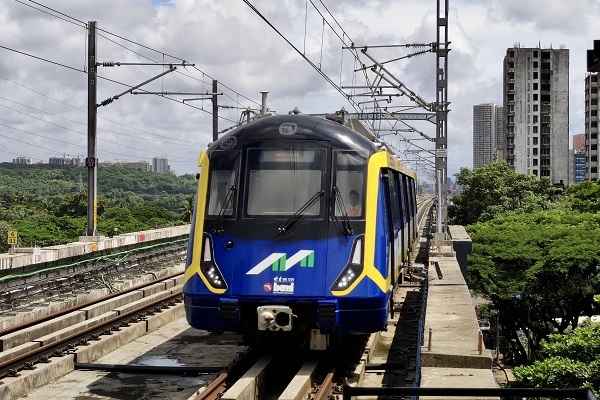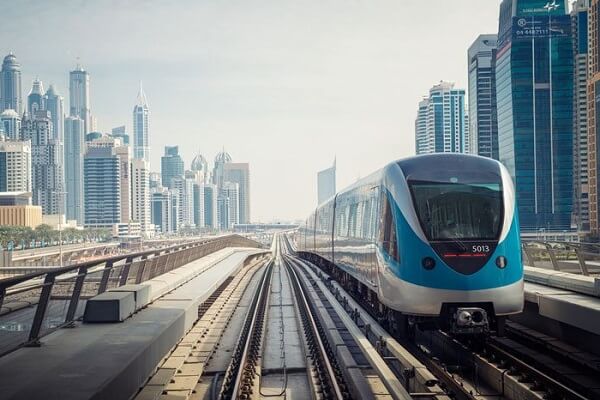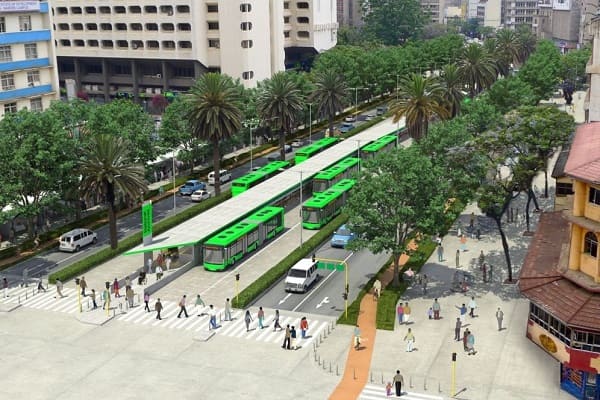 Delhi unveils ambitious Urban Mobility Vision: Luxury Metro Coaches, New Tunnels and Pod Taxi
Delhi unveils ambitious Urban Mobility Vision: Luxury Metro Coaches, New Tunnels and Pod Taxi Qatar approves Saudi Rail Link Agreement, Accelerating Gulf Railway Vision 2030
Qatar approves Saudi Rail Link Agreement, Accelerating Gulf Railway Vision 2030 UP Govt plans to introduce Water Metro services in Ayodhya, Varanasi & Prayagraj
UP Govt plans to introduce Water Metro services in Ayodhya, Varanasi & Prayagraj India’s First Urban Ropeway begins Trial Run in Varanasi, Set to carry 1 Lakh passengers daily
India’s First Urban Ropeway begins Trial Run in Varanasi, Set to carry 1 Lakh passengers daily India and Bhutan to Build First-Ever Rail Link: ₹4,033 Cr Project to Boost Regional Connectivity
India and Bhutan to Build First-Ever Rail Link: ₹4,033 Cr Project to Boost Regional Connectivity Patna to launch Eco-Friendly Water Metro; Trial Run soon between Digha and Kangan Ghats
Patna to launch Eco-Friendly Water Metro; Trial Run soon between Digha and Kangan Ghats Air India Group set to launch Flights Operations from Navi Mumbai International Airport
Air India Group set to launch Flights Operations from Navi Mumbai International Airport Chennai to launch 25-Year Mobility Plan with Unified QR Ticketing and One-App Transit System
Chennai to launch 25-Year Mobility Plan with Unified QR Ticketing and One-App Transit System Kochi Metro bags ₹4.4 crore contract to prepare DPR for Mumbai Water Metro Proejct
Kochi Metro bags ₹4.4 crore contract to prepare DPR for Mumbai Water Metro Proejct Navi Mumbai International Airport set for September launch; IndiGo and Akasa Air to lead Operations
Navi Mumbai International Airport set for September launch; IndiGo and Akasa Air to lead Operations
How Technology Transfer is Revolutionizing the Transportation Sector in India?

Transfer of Technology (ToT) has emerged as a game-changer in India's transportation sector, revolutionizing various aspects of mobility and infrastructure development. The transfer of cutting-edge technologies has paved the way for advancements in transportation systems, enhanced safety and efficiency, promoted sustainability, and stimulated economic growth. This in-depth article explores how technology transfer is reshaping the transportation sector in India, highlighting its impact, benefits, and future prospects.
1. Advancement of Transportation Systems
Technology transfer has been instrumental in introducing advanced transportation systems in India, transforming the way people and goods move across the country.
a. Metro Rail: The transfer of metro rail technology from countries like Japan, France, South Korea, Germany and China has enabled the development of rapid and efficient rail networks. This technology transfer has contributed to the construction of metro rail projects, improving travel times, connectivity, and passenger experience.
b. Intelligent Transportation Systems: The adoption of intelligent transportation systems (ITS) has revolutionized traffic management and control. Technologies such as smart traffic signals, real-time data analytics, and intelligent transport networks have enhanced traffic flow, reduced congestion, and improved overall transportation efficiency.
c. Electric and Autonomous Vehicles: Technology transfer has facilitated the introduction of electric and autonomous vehicles in India. Collaborations with global automakers and technology firms have brought in expertise and accelerated the adoption of clean and self-driving technologies, contributing to a greener and safer transportation ecosystem.
2. Safety and Efficiency Enhancements
The transfer of technology has significantly improved safety and efficiency in India's transportation sector, benefiting both commuters and stakeholders.
a. Advanced Signaling and Safety Systems: Cutting-edge signaling systems and safety technologies transferred from developed nations have bolstered the safety of railway networks. Features such as automated train control, collision avoidance systems, and remote monitoring have minimized accidents and enhanced passenger safety.
b. Intelligent Traffic Management: Technology transfer has facilitated the implementation of intelligent traffic management solutions. Real-time traffic monitoring, adaptive traffic signals, and predictive analytics have optimized traffic flow, reduced travel times, and improved overall road safety.
c. Passenger Information Systems: Advanced technology solutions, including real-time passenger information systems and mobile applications, provide commuters with accurate and up-to-date information about schedules, delays, and routes. This enhances the overall passenger experience and improves travel planning.
3. Sustainable and Green Solutions
Technology transfer has played a crucial role in promoting sustainability and reducing the environmental impact of the transportation sector in India.
a. Electric Mobility: The transfer of electric vehicle (EV) technology has propelled the growth of EV adoption in India. Collaborations with international EV manufacturers and charging infrastructure providers have facilitated the establishment of a robust EV ecosystem, reducing carbon emissions and dependence on fossil fuels.
b. Energy Efficiency Measures: Technology transfer has led to the integration of energy-efficient solutions in transportation systems. Energy management systems, regenerative braking, and lightweight materials in vehicle manufacturing have contributed to reduced energy consumption and increased overall efficiency.
c. Renewable Energy Integration: The transfer of technology has facilitated the integration of renewable energy sources, such as solar power, in transportation infrastructure. Solar-powered charging stations, electrified rail networks powered by renewable energy, and the use of clean energy for public transport have promoted sustainable transportation practices.
4. Economic Growth and Job Creation
Technology transfer in the transportation sector has spurred economic growth and job creation in India.
a. Investments and Collaborations: The transfer of technology has attracted investments from foreign companies and fostered collaborations between Indian and international entities. This has not only infused capital into the transportation sector but also facilitated knowledge exchange and technology partnerships.
b. Domestic Manufacturing and Skill Development: Technology transfer has spurred the growth of domestic manufacturing capabilities in the transportation sector. Collaborations with international manufacturers have led to the establishment of production facilities and the development of skilled labor, creating employment opportunities and promoting technological self-reliance.
c. Ancillary Industries: The growth of the transportation sector has also stimulated ancillary industries such as infrastructure development, maintenance services, logistics, and software development, resulting in a ripple effect of job creation and economic activity.
Conclusion
Technology transfer has undoubtedly emerged as a game-changer in India's transportation sector. Through the transfer of advanced technologies, the sector has witnessed advancements in transportation systems, improved safety and efficiency, adoption of sustainable practices, and economic growth. Continued focus on technology transfer, research and development, and skill development will be crucial for India to sustain its progress and navigate the challenges of a rapidly evolving transportation landscape.






